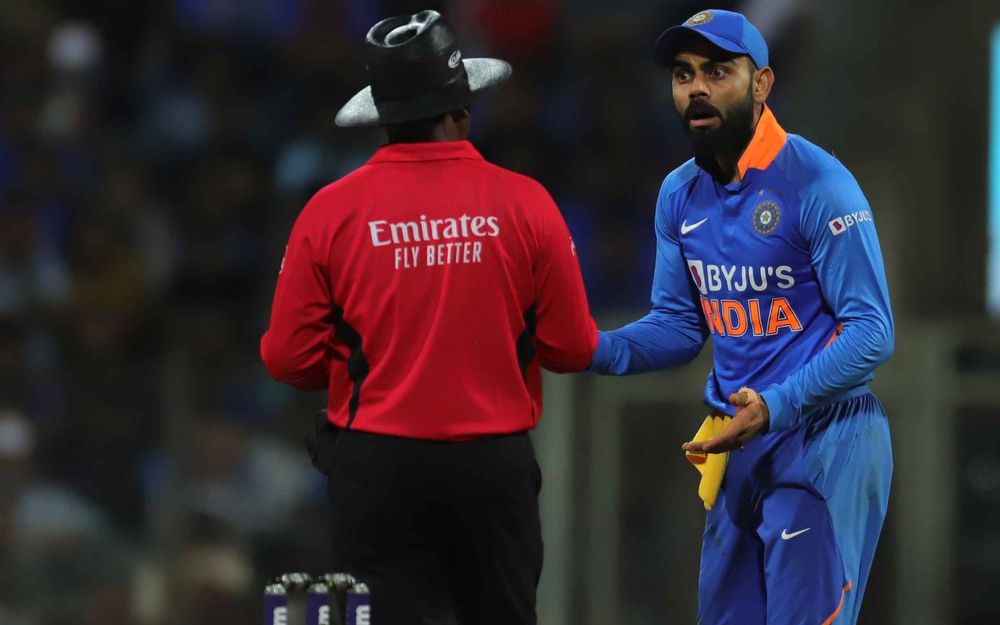Evolution of rule changes in ODI cricket
ODI cricket has come a long way since its inception in 1975, with an encounter between rivals Australia and England, with rules and regulations of the game coming into existence since 1788. However, until then, the rules formed are starkly different from the rules that exist now in ODIs.

The earliest known code for cricket was drafted way back in 1744, with the rules reportedly drawn by the ‘noblemen and gentlemen members’ of the London Cricket Club based at the Artillery Ground. However, it was not known widely in the country until 1755, when the rules were printed, stating all the rules that were drawn up.
The first draft of the laws had reference to a coin toss and the 22-yard pitch. It was also decided that the stumps must be 22 inches, with a six-inch bail, which is being followed even now. Surprisingly, the first written rules also suggested an over with just four balls in it. Well, we have six now, which means we have come a long long way since the drafted rules. However, there still was the rule of overstepping - with it being called ‘no-ball.’ It also included the various dismissals that could get the batsmen ‘out.’
In 1774, it was redrafted in such a way that resembled the modern-day cricketing rules more or less. Rules regarding the bat size, modes of dismissal - LBW and the change of ends were all result of the year’s draft. It was decided then that the bowlers will bowl with one foot behind the bowling-crease and within the return-crease.
Until then there were only two stumps, with bail with a game even played with a solo stump. Following a controversial match in 1775, between Five of Kent and Five of Hambledon, a third stump or ‘the middle’ stump was introduced. However, all of these rules were not until then not made official.
Marylebone Cricket Club (1788)
Marylebone Cricket Club (MCC) was founded in 1787, immediately assuming responsibility for forming the Laws. However, it was not until 1834 where it was called as “The Laws of the Noble Game of Cricket,” revised by the club. The first of such codes was published on 19 May 1835. The second of such code was published in 1884, with successive ones coming in 1947, 1980, 2000 before the 2017 edition which has been the last. Replacing the 6th edition, the 2017 one is called ‘Laws of Cricket 2017 code.’ Over 42 laws are present, stating everything under the sun from about the players to about their conduct on the pitch.
Major rule changes
ODI cricket being 50 overs long
Prudential Cup, which was played in 1975 was the first edition of the Cricket World Cup, won by the West Indian side. While all of this is a widely known fact, the first World Cup was played over 60 overs an innings by the two sides. England hosted the World Cup and in a tight encounter in the final, West Indies beat Australia by 17 runs, with West Indian bowler Keith Boyce picking up 4/50 in his 12 overs.
12 overs, what? Yes exactly, back then, a bowler was allowed a maximum of 12 overs compared to the modern-day cricket where only ten are allowed per bowler. It was not until the 1987 World Cup when the contest was turned into a fifty-over contest. Only after the new rules, the rule of a bowler bowling a maximum of 12 overs changed to ten overs. Since then, the bowlers are allowed a maximum of ten overs in the 50-over format.
Batting powerplay
Even before the 50-over contest was a thing, ICC decided to implement a mandatory rule that restricted the number of fielders outside the inner circle. Only two fielders were allowed outside the 30-yard circle in the first 15-overs before being allowed as many as five fielders for the remaining over. While it was called ‘fielding restriction,’ back then, it was later made into three halves of play.
In 2005, the fielding restrictions were split into three blocks: mandatory ten overs at the beginning of the innings, two further five-over power plays with the bowling team able to choose. However, since 2015, the new rules have been set - which means that the whole innings was going to be in three phases. The first ten overs, with only two fielders outside the inner circle, with overs from 11 to 40 overs being the middle overs before the death overs where four fielders will be outside the circle.
Free hits for no-ball
Until T20 International came by, no-balls were just one run and an extra delivery for the bowler, where the batsmen cannot be out unless he is run-out. However, since the first T20 World Cup, rules have been changed in such a way which affects the bowlers more than ever. For every no-ball after October 2007, the bowlers are punished with an extra delivery, a free hit and a run as well.
However, if the same batsman is on the crease, the field cannot be changed. If the batsmen do change ends, then the delivery will be faced by the other batsmen with the captain having the powers to change the field.
Two new-ball from either end
Prior to October 2010, there was just one ball used for the entirety of the 50 overs. However, since the rule change, two balls were used in ODIs. One was used from either end, with each ball maximum used for only 25 overs. That meant that the ball would never get old, meaning that there was something or the other for the bowler. However, it made it tough for the spinners, for whom the old ball does more than the new one.
On the other hand, batsmen found it easier to bat with the new ball. That meant that more and more opportunities for the batsmen to score runs towards the end overs. Scoring rates have increased considerably, with scores over 300 and 350 becoming the new 250. Since the two new ball rules, 257 300+ scores have been scored in just 1,606 innings. Before that, the stats suggest that it took 16 innings for a 300+ score in ODI cricket.
Substitute
Cricket substitutes are starkly different from the football ones. The use of a substitute has been a known thing since the 18th century, with it being called ‘seeker-out,’ in the beginning. A substitute is primarily a fielder, who has no involvement in bowling or batting. However, in 2005, there was a concept introduced by the ICC termed as ‘Super-sub,’ who could get involved in the game. It was scrapped a year later, when all the teams opposed the rule, calling it ‘radical.’
“Substitute fielders shall only be permitted in cases of injury, illness or other wholly acceptable reasons...and should not include what is commonly referred to as a 'comfort break.” And since then, ICC has come with a concussion substitute, which allows a like-to-like replacement in case of a concussion to a player. Its first use was in the 2019 Ashes series when Marnus Labuschagne replaced Steve Smith on the final day of the Second Test at Lord's. Since then, there have been six instances of a concussion substitute in Cricket.
Super Over
For the people who started watching cricket post-2007, your cricketing journey would have been simultaneous to the journey of this rule. It certainly changed the way the game was played and in hindsight, changed the entire landscape of the 2019 Cricket World Cup. In the 2007 T20 World Cup, there was one tied match between India and Pakistan, which went to a rule called ‘bowl-out,’ which as the name suggests was just a bowl out.
Members from both teams had to walk up to the stump and hit the stumps at the other end, just like a penalty shoot-out in football. However, since then, it has changed shape into a one-over eliminator, which is also called the super-over. Now, coming back to the 2019 World Cup, England beat New Zealand by the count of boundaries despite scores being tied at the end of both regulation overs and the super over. Both teams are given one over to score more runs than the other team. While the rule is still highly debated, it exists, just like the other ones on the list.

Comments
Sign up or log in to your account to leave comments and reactions
0 Comments